Ground Knee

What are some effective ways to prevent knee injuries in sports ?
Knee injuries are common among athletes and can be quite severe, potentially leading to long-term damage or even the end of an athlete's career. There are several effective ways to prevent knee injuries in sports: 1. Proper Warm-Up and Cool-Down: A proper warm-up prepares your body for physical activity by increasing blood flow and warming up muscles. It should include gentle cardio exercises and dynamic stretches that mimic the movements you will perform during your sport. After exercise, gradually reduce your activity level with light stretching and walking to help remove lactic acid from your muscles and prevent stiffness. 2. Wear Appropriate Footwear: Choose shoes specifically designed for your sport that offer adequate support, cushioning, and shock absorption. Replace them regularly as they lose their ability to protect your knees over time. If needed, custom orthotics can provide additional arch support and correct any imbalances in foot alignment. 3. Strengthen Key Muscle Groups: Strong quadriceps help stabilize the patella (kneecap) and protect the knee joint. Exercises like leg presses, squats, and lunges can strengthen these muscles. Flexible hamstrings allow for proper knee extension and flexion during activities like running or jumping. Include hamstring curls and glute bridges in your routine. Strong glutes improve hip stability, which affects knee alignment. Include exercises like hip thrusts and fire hydrants in your workouts. 4. Improve Flexibility and Mobility: Regular static and dynamic stretching can increase flexibility around the knee joint, reducing the risk of injury. Focus on stretching the calves, hamstrings, quadriceps, and IT band. Incorporate mobility drills into your warm-up to improve range of motion at the knee joint. This could include ankle circles, high knees, or butt kicks. 5. Maintain Proper Technique: Ensure that you maintain proper form and alignment during all sports activities. Misaligned movements can place unnecessary stress on the knees. Work with coaches or trainers who can provide feedback on your technique and suggest modifications to reduce strain on your knees. 6. Cross-Train and Rest: Participating in low-impact activities like swimming or cycling can help build overall fitness while reducing repetitive stress on your knees from high-impact sports. Allow sufficient rest days between intense training sessions to give your body time to recover and avoid overuse injuries. 7. Use Supportive Gear When Needed: For athletes with pre-existing knee conditions or those returning from an injury, wearing supportive gear can provide additional stability and protection during activity. Kinesiology tape applied around the kneecap can help reduce pain and improve muscle function by providing subtle cues to the body about proper movement patterns.

What are some good stretching exercises for after a run ?
After a run, it's important to stretch your muscles to prevent injury and improve flexibility. Here are some good stretching exercises for after a run: - Hamstring Stretch: Sit on the ground with your legs straight out in front of you, reach forward and try to touch your toes without bending your knees, hold for 15-30 seconds and repeat 2-3 times. - Quadriceps Stretch: Stand upright and bend one knee, bringing your heel towards your buttocks, grasp your ankle with one hand and hold onto a stable object with the other hand for balance, pull your foot closer to your buttocks until you feel a stretch in the front of your thigh, hold for 15-30 seconds and repeat 2-3 times on each leg. - Calf Stretch: Stand facing a wall with your hands placed against it at shoulder height, step one foot back behind you, keeping both heels flat on the ground, bend your front knee slightly while keeping your back leg straight, hold for 15-30 seconds and repeat 2-3 times on each leg. - Gluteal Stretch: Sit on the ground with your legs bent and feet flat on the floor, place your right ankle over your left knee, creating a "figure four" shape with your legs, gently push down on your right knee until you feel a stretch in your glutes, hold for 15-30 seconds and repeat 2-3 times on each side.

What are the best exercises for a full-body workout at home ?
A full-body workout at home is an excellent way to maintain your fitness levels without the need for a gym membership or equipment. Here are some of the best exercises that you can do at home to get a comprehensive workout: 1\. Squats: Stand with your feet shoulder-width apart and your arms straight out in front of you, then lower your body by bending at the knees and hips until your thighs are parallel to the ground. Pause for a moment, then push through your heels to return to the starting position. Repeat this movement for 10-15 repetitions. 2\. Lunges: Stand with your feet hip-width apart and take a big step forward with one foot, then lower your body until both knees are bent at 90-degree angles. Keep your front knee directly over your ankle and your back knee hovering just above the ground, then push off with your front leg to return to the starting position. Repeat this movement for 10-15 repetitions on each leg. 3\. Push-Ups: Start in a plank position with your hands shoulder-width apart and your feet together, then lower your body until your chest nearly touches the ground. Push through your palms to return to the starting position. Repeat this movement for 10-15 repetitions. 4\. Plank: Start in a push-up position with your hands shoulder-width apart and your feet together, then lower your forearms to the ground so that your elbows are directly under your shoulders. Hold your body in a straight line from head to heels for 30 seconds to a minute. Repeat this movement for 3-5 sets. 5\. Burpees: Start standing with your feet shoulder-width apart and your arms at your sides, then lower your body into a squat position and place your hands on the ground in front of you. Jump both feet back into a plank position, perform a push-up, jump both feet forward so they land outside of your hands, stand up and jump into the air with your arms overhead. Repeat this movement for 10-15 repetitions.

The reason why your legs are thick after running. The correct running method keeps you away from the small thick legs

Can you suggest some bodyweight exercises that are suitable for beginners ?
Bodyweight exercises are a great way to start your fitness journey. They require no equipment and can be done anywhere, making them perfect for beginners. Here are some bodyweight exercises that are suitable for beginners: 1. Squats: Stand with your feet shoulder-width apart, lower your body by bending at the knees and hips, keep your back straight and head up, lower yourself until your thighs are parallel to the ground, pause, then push back up. 2. Lunges: Step forward with one foot, lower your body by bending at the knee and hip of the front leg, keep your back straight and head up, lower yourself until your front thigh is parallel to the ground, pause, then push back up. 3. Push-ups: Get into a plank position with your hands shoulder-width apart, lower your body by bending at the elbows, keep your body in a straight line from head to heels, lower yourself until your chest is close to the ground, pause, then push back up. 4. Planks: Get into a push-up position but instead of lowering yourself, hold your body in a straight line from head to heels, keep your abs tight and back straight, hold this position for as long as you can. 5. Burpees: Start in a standing position, lower yourself into a squat position and place your hands on the ground, kick your feet back into a push-up position, do one push-up, bring your feet back to the squat position, jump up into the air with your arms overhead.

What are the best exercises for sports recovery ?
The text discusses the importance of sports recovery and suggests various exercises to aid in this process. The exercises include stretching, foam rolling, light cardiovascular exercise, and yoga. Stretching helps increase blood flow, reduce muscle tension, and improve flexibility. Foam rolling relieves muscle tightness and soreness by applying pressure to specific areas of the body. Light cardiovascular exercise increases blood flow and promotes recovery. Yoga improves flexibility, reduces stress, and promotes relaxation while also improving balance and stability. The author suggests several specific exercises for each category to help athletes recover from their workouts or competitions.

Are there any specific exercises or stretches that can help improve my golf game ?
Golf improvement through specific exercises and stretches, including core strengthening exercises like plank and Russian twists, flexibility and mobility stretches such as hamstring and hip flexor stretches, and putting practice drills like the line and gate drills to enhance precision and control.
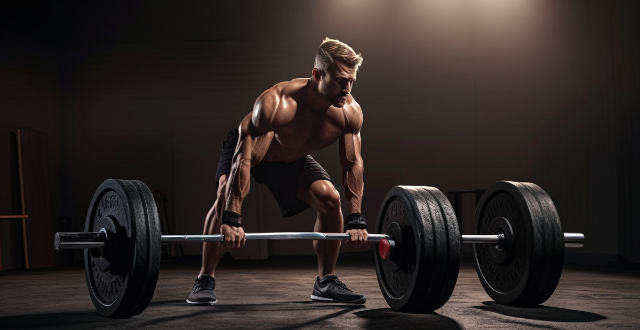
What are the best stretches for cooling down after a gym session ?
After a gym session, it's crucial to gradually cool down your body. Here are the best stretches for that: hamstring, quadriceps, calf, hip flexor, and back stretches. These exercises help reduce heart rate, lower blood pressure, prevent muscle soreness, improve flexibility, and range of motion. Remember to hold each stretch for at least 30 seconds and avoid bouncing to prevent injury.
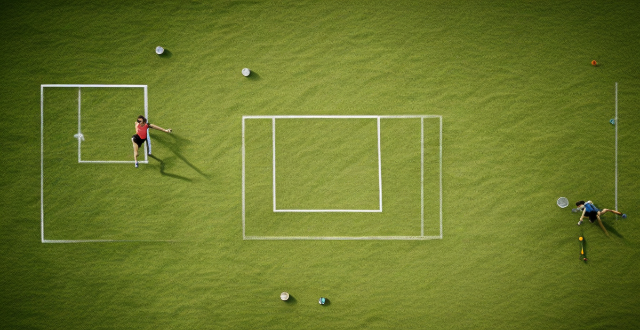
Are there any specific exercises that can help prevent sports injuries ?
To prevent sports injuries, it's important to engage in specific exercises that focus on warm-up and stretching, strength training, plyometrics, and core strengthening. Warm-up exercises like jogging or brisk walking, along with dynamic stretches, help prepare the body for physical activity by increasing blood flow and reducing injury risk. Stretching exercises such as hamstring and quadriceps stretches improve flexibility and range of motion. Strength training exercises like squats and planks build strength in key muscle groups, improving stability and reducing joint stress. Plyometric exercises like box jumps and lateral bounds enhance power, speed, and agility. Core strengthening exercises like bicycle crunches and plank with hip dips provide stability and support during physical activities. By incorporating these exercises into your routine, you can reduce the risk of sports injuries and improve your overall athletic performance.

What are some effective warm-up exercises before starting a run ?
This article emphasizes the importance of warm-up exercises before starting a run. It discusses the benefits of dynamic stretching and light aerobic activities, such as high knees, butt kicks, leg swings, jogging in place, side shuffles, and high knees forward march. It also mentions static stretching as an optional component of warm-up routines, focusing on major muscle groups used during running. Finally, it highlights the necessity of proper cool-down and stretching post-run to aid muscle recovery and reduce soreness.

What are the best exercises to do while sitting at a desk ?
The article discusses the negative effects of prolonged sitting and provides a list of exercises that can be done while sitting at a desk to alleviate these risks. The exercises include bodyweight exercises, stretching exercises, and cardiovascular exercises. Bodyweight exercises include shoulder shrugs, leg raises, seated hip abductions, seated knee extensions, and seated calf raises. Stretching exercises include neck stretches, shoulder stretches, wrist stretches, and ankle stretches. Cardiovascular exercises include desk jogging, jumping jacks, mountain climbers, and burpees. Incorporating these exercises into your daily routine can improve your overall health and wellbeing.
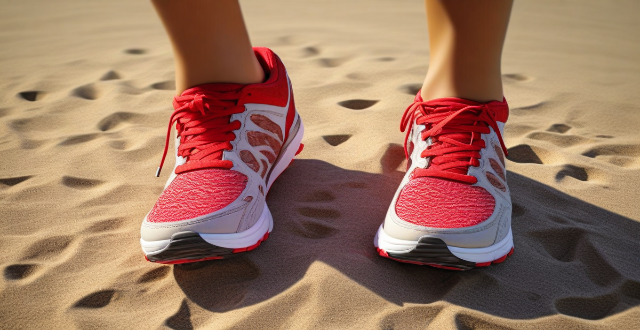
How important is proper footwear in preventing sports injuries ?
The importance of proper footwear in preventing sports injuries is discussed, highlighting the need for ankle support, cushioning, traction, arch support, and toe protection. Wearing suitable shoes can help reduce the risk of sprains, strains, fractures, and other injuries common in sports. It is crucial to choose shoes that fit well, offer adequate support, and are appropriate for the specific sport or activity.
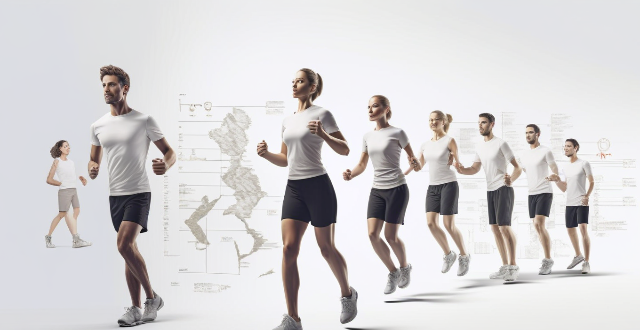
Are there any specific stretches or warm-up routines that aid in sports recovery ?
Recovery is an essential aspect of sports and physical activities. Stretching and warm-up routines can aid in reducing the risk of injuries, improving performance, and enhancing overall well-being. Specific stretches such as hamstring, calf, and quadriceps stretches can increase flexibility, reduce muscle tension, and promote blood flow. Warm-up routines like cardiovascular exercises, resistance band exercises, and foam rolling can activate muscles, improve circulation, and reduce tightness. Incorporating these routines into your recovery process can help you achieve better results and prevent injuries.

How can I incorporate stretching into my daily office routine ?
Incorporating stretching into a daily office routine is crucial for maintaining good posture, preventing muscle stiffness, and reducing the risk of work-related injuries. Here are some tips to help you add stretching to your daily routine: Start with a warm-up: Begin your day with simple warm-up exercises like shoulder shrugs, arm circles, and neck rolls. Take breaks to stretch: Set an alarm or use a timer app to remind yourself to take short breaks throughout the day to stretch your wrists, back, and legs. Use your lunch break wisely: Take advantage of your lunch break to do a more comprehensive stretching session. Find a quiet space where you won't be disturbed and stretch your hamstrings, quads, and calves. End your day with cool-down stretches: Before leaving the office, take a few minutes to cool down and stretch out any tight muscles that have developed during the day. Stretch your chest, hip flexors, and shoulders. Remember to listen to your body and only stretch to the point of mild discomfort. Never force a stretch or bounce, as this can lead to injury. By incorporating these simple stretching exercises into your daily office routine, you'll improve your overall well-being and increase productivity at work.
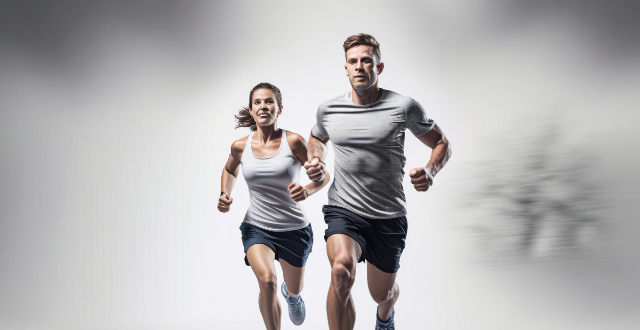
What are some dynamic warm-up exercises that can be done before running ?
Dynamic warm-up exercises are essential for runners to improve performance and reduce injury risk. These include high knees, butt kicks, leg swings (front and side), walking lunges, toy soldiers, ankle circles, side shuffles, plank to runner's lunge, jumping jacks, and light jogging. Each exercise targets specific muscles and joints, enhancing mobility, flexibility, and circulation. Completing these warm-ups prepares the body for running, ensuring better efficiency and comfort during the activity.